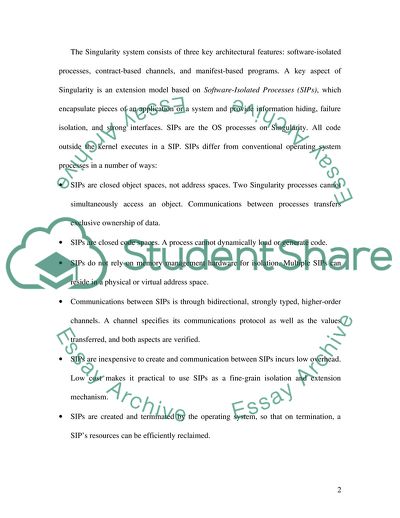Cite this document
(Contemporary Software Systems Case Study Example | Topics and Well Written Essays - 2500 words, n.d.)
Contemporary Software Systems Case Study Example | Topics and Well Written Essays - 2500 words. https://studentshare.org/information-technology/1712751-singularity-is-a-microsoft-research-os-that-is-a-possible-contender-for-the-operating-system-for-the-next-platform-discuss-what-this-platform-could-be-the-oth
Contemporary Software Systems Case Study Example | Topics and Well Written Essays - 2500 words. https://studentshare.org/information-technology/1712751-singularity-is-a-microsoft-research-os-that-is-a-possible-contender-for-the-operating-system-for-the-next-platform-discuss-what-this-platform-could-be-the-oth
(Contemporary Software Systems Case Study Example | Topics and Well Written Essays - 2500 Words)
Contemporary Software Systems Case Study Example | Topics and Well Written Essays - 2500 Words. https://studentshare.org/information-technology/1712751-singularity-is-a-microsoft-research-os-that-is-a-possible-contender-for-the-operating-system-for-the-next-platform-discuss-what-this-platform-could-be-the-oth.
Contemporary Software Systems Case Study Example | Topics and Well Written Essays - 2500 Words. https://studentshare.org/information-technology/1712751-singularity-is-a-microsoft-research-os-that-is-a-possible-contender-for-the-operating-system-for-the-next-platform-discuss-what-this-platform-could-be-the-oth.
“Contemporary Software Systems Case Study Example | Topics and Well Written Essays - 2500 Words”. https://studentshare.org/information-technology/1712751-singularity-is-a-microsoft-research-os-that-is-a-possible-contender-for-the-operating-system-for-the-next-platform-discuss-what-this-platform-could-be-the-oth.


